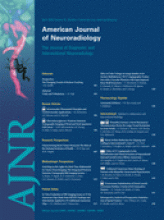We thank Drs Raininko and Bajic for their interest in our recent article and welcome the opportunity to clarify certain issues.1 We would like to emphasize the distinction between the collection of 10 findings termed “hippocampal malrotation” (HIMAL) by Barsi et al2 and the isolated finding of an under-rotated hippocampus or “incomplete hippocampal inversion.” We do not dispute the idea that abnormal hippocampal rotation is a failure of the complete rotation that is an accepted part of normal brain development.3,4 Variation in other authors’ terminology for this isolated finding is acknowledged in the article by Bajic et al.5
The differences between our lower reported rate in individuals without epilepsy and those of Bajic et al5 may be due to the different criteria used. We used the stricter criteria requiring all the elements to be present, whereas they accepted partial forms, which will clearly result in higher rates and may also account for the frequency of bilateral findings, which are rare when stricter criteria are used.1
Given that there is still a debate about whether HIMAL represents a finding of pathologic significance, we believe that a strict definition is more appropriate because if HIMAL is of pathologic significance, the stricter criteria are more appropriate for identifying associated pathology. If HIMAL becomes established as a pathologic finding, then expanding the spectrum to partial forms and clarifying whether they are also associated with pathology will be the next step. However, if one expands the criteria to partial forms, one may well lose the association between HIMAL and epilepsy. In any case, that would have to be identified in a case-control study by using the same criteria.
References
- Copyright © American Society of Neuroradiology












